Holy Sites in the West Bank
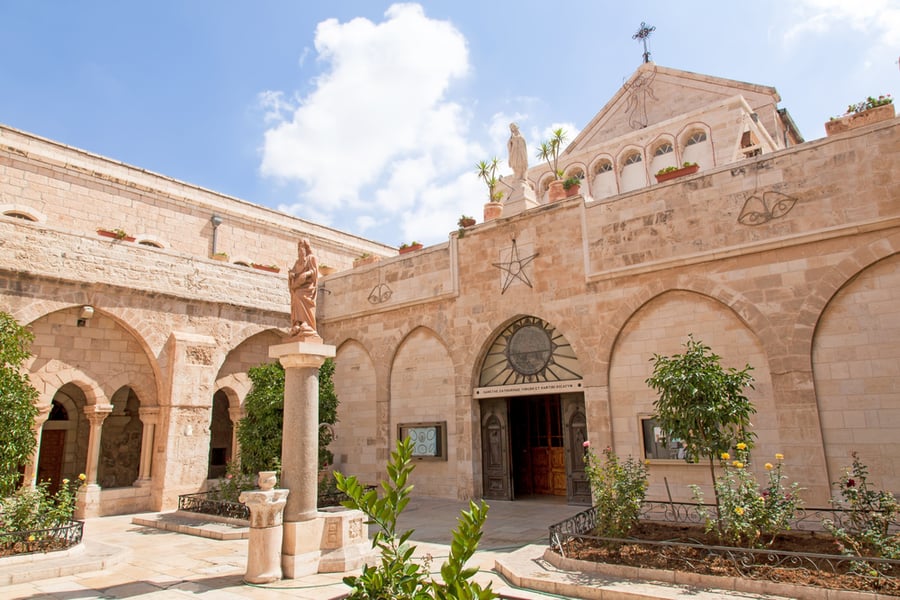
The Church of St. Catherine, Bethlehem
Here are some of the holy sites in the West Bank that are holy to three major world religions - Judaism, Christianity, and Islam and a guide to what makes them so special to their followers.
To see the list of holy sites in Israel have a look at this article. To explore the West Bank and its sites join us - we offer awesome, guided Jericho tours and Bethlehem tours.
Jewish Holy Sites in the West Bank
- Hill of Phinehas - In the Bible, it says in the book of Joshua that the Hill of Pinehas is the burial place of Aaron's sons, Itamar and Eleazer. Aaron’s grandson, Phinehas, is also believed to have been buried at this site.
- Awarta - In Arabic, Awarta means ‘windowless’ or ‘hidden.’ Inhabited since Biblical times, between the 4th and 12th centuries the town was an important Samaritan center and was the place of one of their synagogues. In Awarta today there are three large sites which, according to Jewish tradition, are the burial tombs of Aaron’s sons, Itamar and Eleazer.
- Eshtemoa synagogue -This ancient city mentioned in the Bible houses the remains of an ancient Jewish synagogue dating from around the 4th–5th century CE. The remains of the synagogue were excavated in 1934 by archaeologists Reifenberg and Meyer. They described a hole in the wall which they believe was used as a Torah Ark. A further excavation in 1970 by Ze'ev Yeivin showed that the synagogue was built in the main part of the village. Constructed in a ‘boardhouse’ style it had no columns and worshippers could enter by any of 3 doors on its eastern side. Archaeologists found external ornamental carvings and a mosaic floor. Four menorahs (Jewish candelabra) were found carved onto doors and one of these can, today, be seen in the Rockefeller Museum in Jerusalem. Two benches were built along the north and south walls.
- Jericho synagogue - Discovered in 1936 in excavations carried out under the British Mandate, archaeologists estimate that this synagogue dates back to the late 6th/early 7th century CE. All that remains of it today is a mosaic floor, on which there is an Aramaic inscription. Visitors can also see a medallion on which is carved "Shalom al Yisrael" (meaning "Peace on Israel"). This is the reason some people refer to it as the “Shalom al Yisrael synagogue. Whilst the site was taken care of by Israel after the Six-Day War, it came under the control of the Palestinian Authority after the Oslo Accords. However, since 2005, prayer services for Jews have been allowed there once a week.
- Tombs of Joshua and Caleb close to Kifl Hares - Joshua and Caleb were two Israelite spies, who took the initiative to obey God and lead their people into the Promised Land. Revered as national heroes by religious Jews, it is still possible to pray in this area but under guard provided by the Israeli Army.
- Hebron - Situated south of Jerusalem, Hebron has been a focus of religious worship for over 2000 years. Its name is derived from the Hebrew word haver (friend), a description for the Patriarch Abraham, the friend of God. Hebron has a long Jewish history that relates to the Cave of Machpelah, which Abraham purchased as a family tomb. This was the first piece of land owned by the Jewish people in the Promised Land. According to the Bible, the Patriarchs Abraham, Isaac, and Jacob, and the Matriarchs Sarah, Rebekah, and Leah are buried there, and, in the Jewish tradition, the tombs of Adam and Eve are also located in Hebron.
Cave of the Patriarchs, Hebron. Photo by Dan Rosenstein on Unsplash
Christian Holy Sites in the West Bank
Christian Holy Sites in Bethlehem
- The Church of the Nativity - This basilica is the oldest of its kind in the Holy Land and is of incredible importance to Christians since they believe it is the spot where Jesus was born. First commissioned by Emperor Constantine the Great, there is a grotto inside which thousands of pilgrims flock, year-round. At the heart of the Church of the Nativity is the Grotto, the cave where Jesus is supposed to have been born, and north of it is the Roman Catholic Church of St. Catherine. The original Roman-style floor is now covered with flagstones but beneath a trap door, there is a part of an original mosaic from the time of Constantine. The medieval gold mosaics that covered the walls are now, for the most part, gone. Midnight Mass is held here every Christmas Eve and is also broadcast live around the world.
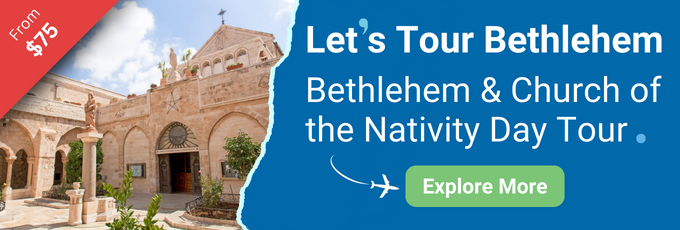
- The Milk Grotto -The Milk Grotto is a sacred spot for Christians since, according to legend, it is the place where Joseph and Mary stopped so that Mary could nurse her baby, Jesus. Tradition also has it that as she nursed him, a drop of her milk fell upon the stone on which she sat, and it turned white. Today, visitors will see the carved rock is white. This is a popular spot for new mothers to pray, as well as women who wish to conceive.
- Shepherds' Fields - On this spot stands a Roman Catholic church and tradition has it that this is the site where angels announced the birth of Jesus to the world. The church was constructed in 1953 by Franciscans and designed by the famous Italian architect Antonio Barluzzi (who has a stellar reputation for his numerous monuments in the Holy Land). Inside are five apses, which are supposed to resemble the outline of a tent.
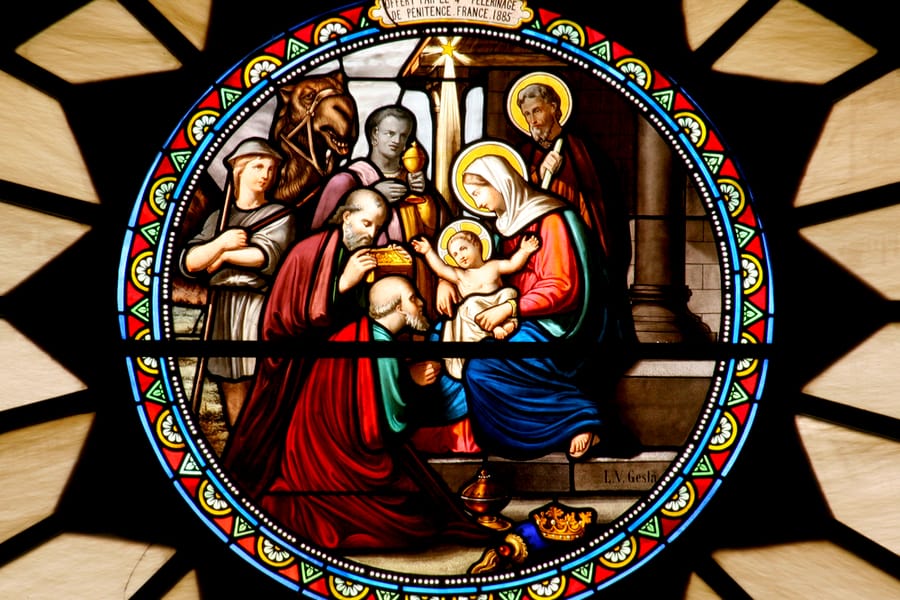
Nativity scene, stained glass, Church of St. Catherine, Bethlehem
Christian Holy Sites in Jericho- Zacchaeus Sycamore Tree - This tree in Jericho is named after Zaccahues, an influential tax collector who lived in Jericho. He is known for being so devoted to Jesus that he climbed a sycamore tree to see him. Zacchaeus was known for his generosity (giving away much of his wealth) and as a descendant of Abraham, some Christians regard him as carrying out Jesus’s values of charity.
- Elisha’s Spring - Also called ‘the Prophet’s Fountain’ this freshwater spring is located near Tel Jericho.. According to the Bible, the city’s water source was polluted, making local people sick and women infertile. Elisha was told by God to throw salt in the water and a miracle was then performed - healing the water and giving new life to the city.
- The Mount of Temptation - Located on the edge of a cliff in the Judean desert, this is - according to the Gospel of Matthew- the place where Jesus battled Satan for 40 days and 40 nights, resisting all of the temptations that were offered to him. Halfway up the mountain is the Greek Orthodox Monastery of Temptation ("Deir al-Qarantal" in Arabic).
- Jacob's Well - Constructed out of rock that is believed to be about 2,000 years old, this deep well is located close to the archaeological site of Tel Balata. It lies within the complex of an Eastern Orthodox monastery in the city of Nablus.
- Mar Saba Monastery - Set amid the stunning scenery of Wadi Qelt this is a must-see, even if you cannot get inside. Please keep in mind women are not allowed in the Monastery.
- St. George's Monastery, Wadi Qelt - also known as the Monastery of Choziba, is an amazing construction hung on the cliff. If you want to get in women should wear clothes that cover their legs and shoulders. This outstanding location is not to be missed.
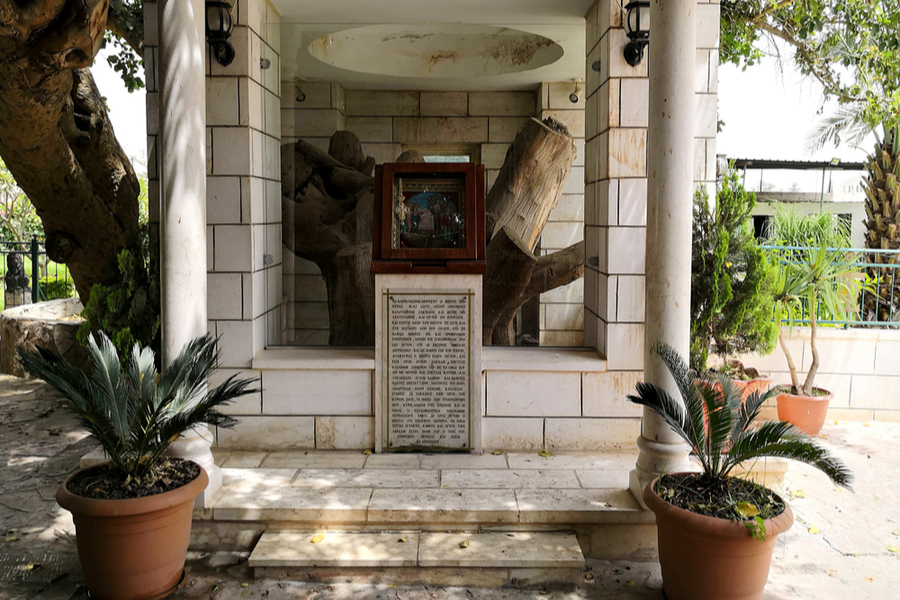
The real sycamore tree from the Bible, the Greek Orthodox church in Jericho
Muslim Holy Sites in the West Bank
- Nabi Musa, Tomb of Moses - Nabi Musa lies about 20 km east of Jerusalem and 10 km south of Jericho, this site is also known as Nebi Musa, it is believed to be the place where Moses was buried. It is also the name of an important religious festival that lasted 7 days and was celebrated each year by Palestinian Muslims, beginning the Friday before Good Friday. Some argue that it is the most important pilgrimage site in Palestine. The building has several white domes and sits on the Jerusalem-Jericho road. Historically, this was a major route used by Arabs in the Mediterranean, who traveled along the road en route to Mecca, for a pilgrimage.
- Great Mosque of Nablus - This is the largest and most well-known mosque in the whole of Nablus. Originally built as a Byzantine church, it was converted into a mosque during the Islamic era, rebuilt as a Latin church by the Crusaders, and then rebuilt once more as a mosque in the 12th century. It is situated in the east of the Old City and its interior is long and rectangular. The building has a silver dome. It is used daily for worship, by locals and Muslims across the West Bank, and although not particularly touristic, visitors can see just how old it is from the stone pillars. There is a smaller entrance for women at the side. Locals often refer to this building as the Al Salahi Mosque.
- Mosque of Prophet Yunus - This mosque is home to a tomb that Muslims believe to be that of Prophet Yunus. The mosque was built in 1226 CE by the Ayyubids and can be found in a town near Hebron by the name of Hulhul. It is built on Mount Nabi Yunus, the highest peak in the West Bank. Yunus is also known by two other names - Dhun-Nun (Lord of the Fish) and Sabhilil-Hot (Companion of the Fish). Built on two floors, the burial area is in the crypt. The building has a square floor surrounded by porticoes, with well-built cross vaults. Yunus, of course, was Jonah in the Bible and the embroidered green cloth covering the tomb has beautiful Arabic calligraphy written on it.
Nablus, West Bank. Photo by Nour Tayeh on Unsplash
Sites in the West Bank Holy for All 3 Faiths:
- Rachel's Tomb - For Jews, this is the ‘Kever Rachel’ and for Muslims, it is the Bilal bin Rahab mosque. It is located in the north of Bethlehem and is generally considered to be her resting place. The earliest recording of this comes from the 4th century, from the Bordeaux Pilgrim. When Moses Montefiore, a Jewish philanthropist, renovated the site in the mid-19th century, he obtained keys for Jews but also built an antechamber for Muslims to pray. The site is the third holiest in Israel for Jews and because of its location in the West Bank remains a contentious site and is often closed; for more details, check out our updated guide for travelling from Jerusalem to Bethlehem,
- Cave of the Patriarchs - Situated in Hebron, and also known as the Cave of Machpelah, this site is holy both to Muslims and Jews. Muslims call it by the name of the Sanctuary of Abraham. After the Temple Mount, Jews consider it to be their second most holy site. In the book of Genesis, it is told that when Sarah (Abraham’s wife) died, he purchased this land to bury her - it is the first commercial transaction recorded in the Bible. The rectangular building is divided into two sections with four cenotaphs dedicated to Abraham, Sarah, Jacob, and Leah. The entrance to the enclosure is on the southwest side of the building and there is a mosque outside the entrance - this must be passed through to gain access to the cenotaphs. Pottery found by archaeologists in the area indicates that the site could well date back to the 8th century. Today the site is extremely sensitive, with restricted access both to Muslims and Jews, under the terms of the Wye Agreement. At present, the Waqf (an Islamic Charitable Agreement) controls 80% of the area.
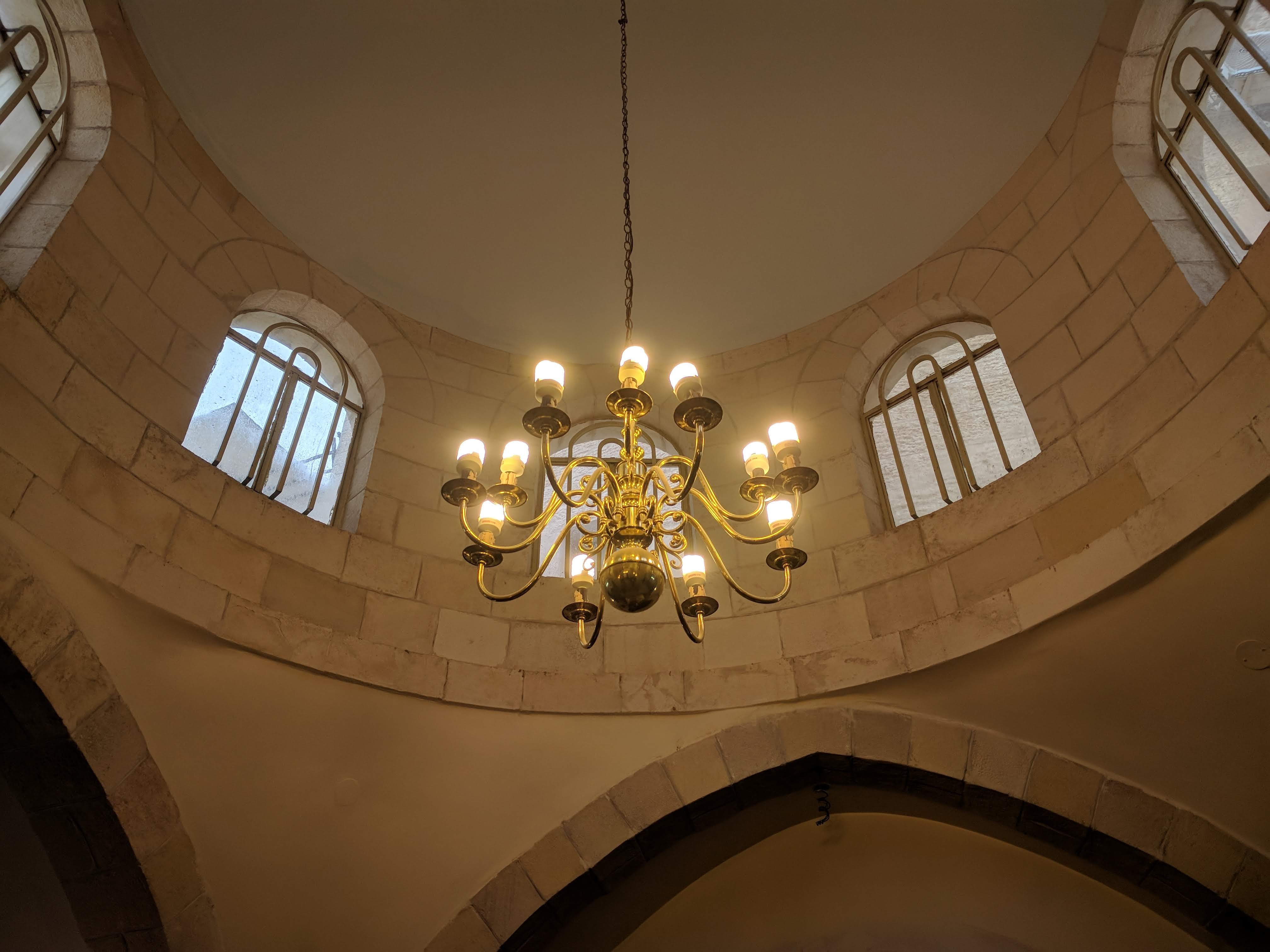
Cave of the Patriarchs, Hebron. Photo by Dan Rosenstein on Unsplash
- Tomb of Samuel - Known both as Nebi Samuel or Bebi Samwil, this is considered to be the traditional burial site of Samuel, a prophet both for Jews and Muslims. It sits on a high heel, 900 meters above sea level, close to the Israeli settlement of Givat Zeev and the Palestinian village of Beit Hanina. Archaeological excavations were carried out there between 1992 and 2003 although conclusions as to the area’s importance are still disputed.
- Joseph's Tomb - Located on the outskirts of Nablus, 300 meters from Jacobs Well, this monument is at the foot of a valley that separates Mount Gerizim and Ebal. It is considered to be holy by Christians, Jews, and Muslims, and some Muslims believe it is the location of a local sheik, Yusef Al-Dawlik, who lived in medieval times. There is no concrete archaeological evidence that this is Joseph’s tomb but the Bible gives clues. In Genesis, it is said that his brothers swore to carry Jacob’s bones from Egypt to Canaan, and in Exodus, it says they were taken by Moses. Later accounts state the bones were brought to the Promised Land by the Children of Israel and interred in Shechem (the biblical name for Nablus).
- Oak of Mamre - Also known as the Oak of Sibta, this site is located in Hebron. Its name is so because of the ancient tree that grows there that appears to be dead, only there is a young sprig/sapling next to it. Some traditions say it is where Abraham hosted three angels and pitched his tent. Nearby is a Russian Orthodox monastery, making the site a major pilgrimage site for Russian pilgrims. Today, it is the only functioning Christian site in the entire Hebron area.
If you'd like to learn more about the West Bank, Israel, and Jordan, feel free to check out our travel blog - and contact us if you wish to visit these wonderful holy places; it is our specialty.
 Login / Register
Login / Register
 Contact Us
Contact Us
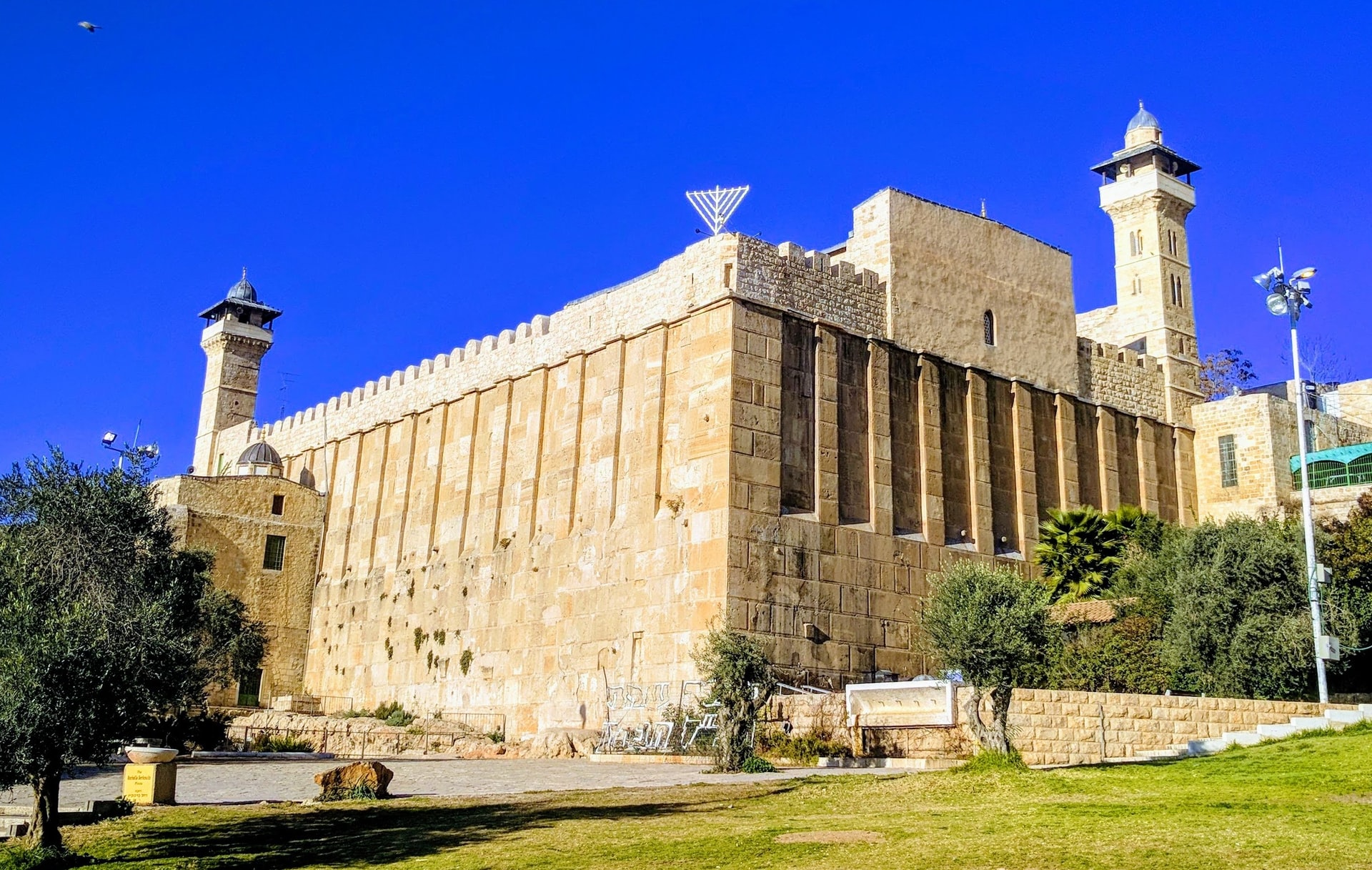
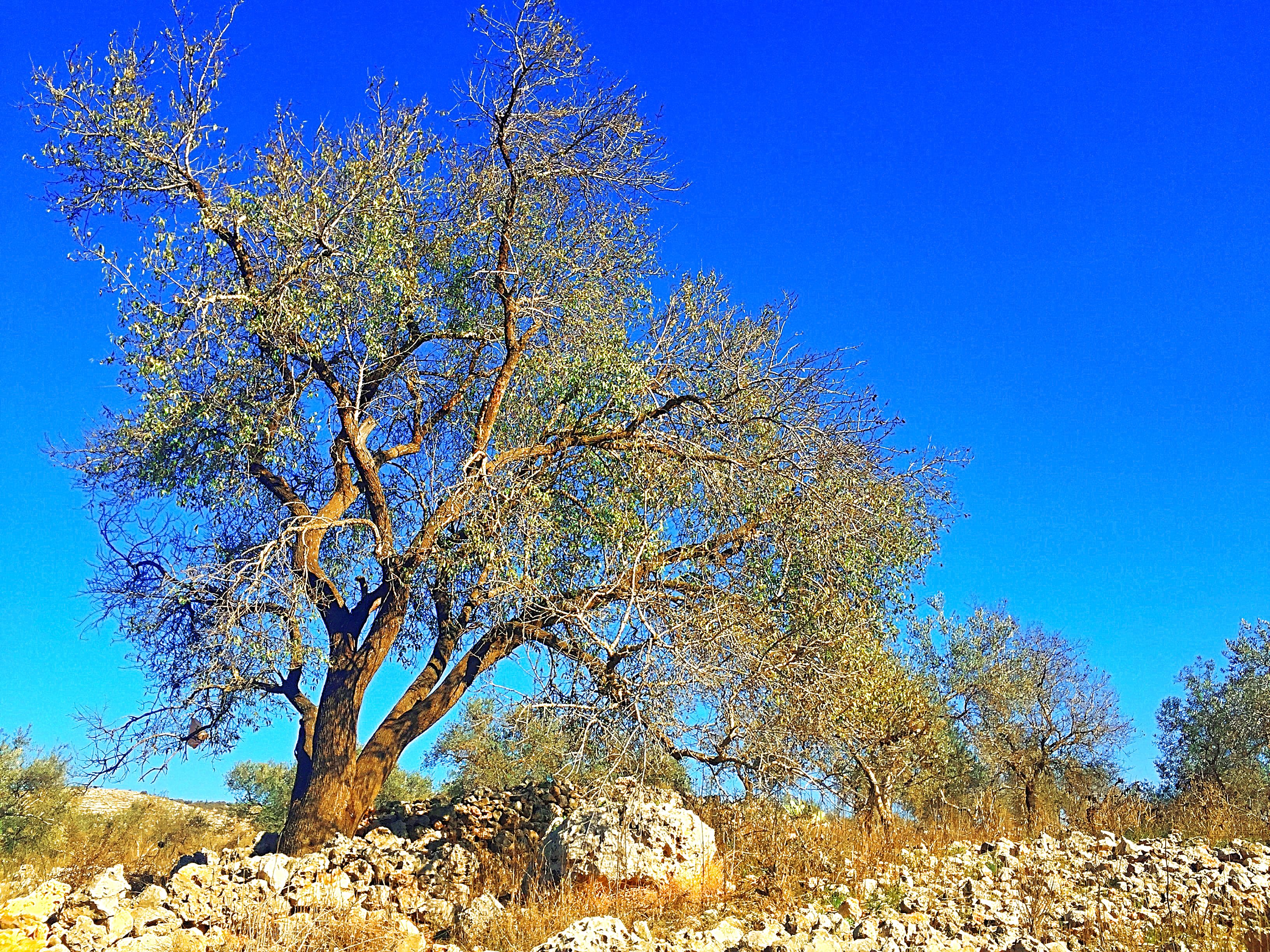
 Certificate of Excellence
Certificate of Excellence Guaranteed Departure
Guaranteed Departure Low Prices Guaranteed
Low Prices Guaranteed 24/7 Support
24/7 Support




